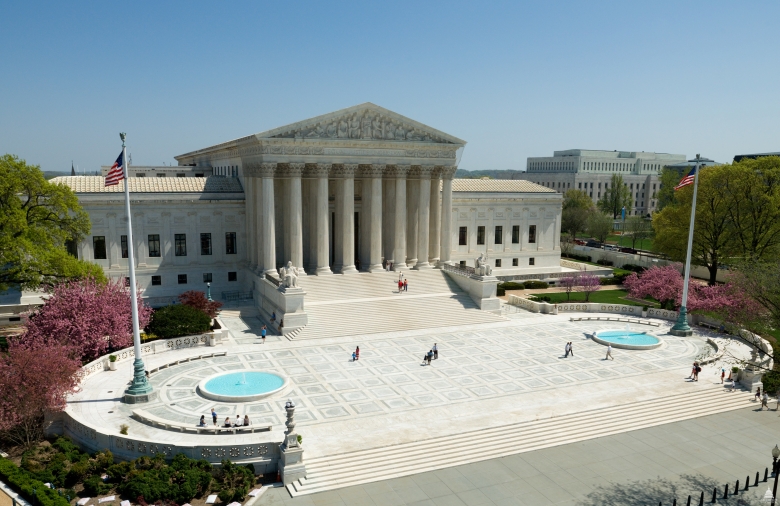
Explore Capitol Hill
Supreme Court Building
First Street NE between East Capitol S. and Maryland Ave., adjacent to the U.S. Capitol and the Library of Congress
Finished and occupied in 1935, the Supreme Court building is a fitting home for the nation's third branch of government. Chief Justice William Howard Taft was behind the effort to provide the Court with its own building, moving out of the U.S. Capitol where it had been meeting since 1801. The Court did not move far, however. Its new location was just across the street and was selected to remain near Union Station and thus convenient for out-of-town lawyers.
The architect of the Supreme Court, Cass Gilbert of New York City, drew upon the classical Roman temple form as the basis for the Court's new building. Reached by a great flight of broad steps, the portico of tall Corinthian columns gives the building a monumental entrance. Lower wings flank the central temple and help relate it to the lower-scaled buildings of the nearby Capitol Hill neighborhood.
The design of the Supreme Court building achieved a balance between classical grandeur and quiet dignity, appropriate for the nation's highest court. Unlike the Library of Congress' Thomas Jefferson building next door (a textbook example of the flamboyant Beaux Arts style), the Supreme Court was designed in a quieter, more reserved style now termed neoclassical revival.
The building is a steel frame structure faced with white marble. The facade was about 300 feet wide with a central temple-like pavilion fronted by a monumental portico of 16 Corinthian columns supporting an elaborate entablature. The commanding central section was flanked by lower wings in the Ionic order. Four spacious courts provided the interior with unexpected sources of light and air. The plan carefully and deliberately separated the justices' working areas from the public, ensuring privacy and quiet. Visitors approached the building by way of a long flight of marble steps leading to the portico and a grand rectangular vestibule (called the "Great Hall"), 30 feet high and lined with Doric columns. Straight ahead was the courtroom, a space about 64 feet square and lighted by side windows behind screens of Ionic columns.
Although the court room could have been larger, Taft wanted to preserve much of the intimacy that he liked in the court room in the U.S. Capitol Building. Above the court is the law library, an elegant room paneled in oak with carvings of appropriate emblems and allegorical figures.







